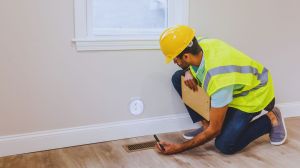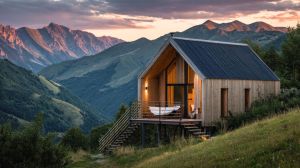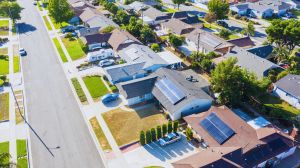Choosing Your Perfect Starter Home
Starter homes aren’t what they used to be. Prices are up, mortgage rates remain high, and inventory is tight, particularly at the lower end of the market. What was once considered an easy first step into homeownership now takes more planning and stronger finances. Selecting the right starter home means focusing less on style and more on function, value and flexibility at a time when budgets leave little room for error.
What Is Considered a Starter Home?
A starter home is your first step into homeownership. It’s typically smaller, more affordable and simpler than your “forever” house. Think two to three bedrooms, one to two bathrooms and basic finishes. It’s not designed to have every feature on your wishlist, but it should be functional and livable. Most importantly, it should give you flexibility: space to live now, and options to sell or rent later if your needs change. It might be a condo, a townhouse or a modest single-family home. The right starter home gets you in the market without overextending. If you’ve ever asked what is a starter home, this is it.
Set a Realistic Budget, Then Add 10%
The price on the listing isn’t the price you’ll pay. Expect closing costs, insurance, utility startup fees and early repairs. Once you set your max, scale it back, then build in a buffer. That extra cushion protects you from short-term panic when things break or costs spike. First-time buyers can end up house poor because they maxed out the purchase price without preparing for the rest. Choose a house that leaves you room to breathe, not one that drains you from day one.
Nail the Location
Before you get into layouts or finishes, narrow your search by location. A less-updated home in a strong area beats a flipped house in the wrong place. Look for access to your job, school zones, walkability, low insurance risks and future resale strength. Go beyond the listing. Visit at different times, drive the commute, check noise levels and parking. Research upcoming zoning changes and construction plans. If you can’t make the location work long-term, no feature inside will fix that.
Know What to Avoid: Big Fixes and Structural Risks
You can paint walls or swap flooring, but foundation cracks, old wiring, mold or roof damage can wreck your budget and timeline. Always get a full inspection and don’t gloss over red flags. If repairs involve plumbing under slabs, hidden electrical upgrades or drainage correction, move on, no matter how charming the house looks. A solid starter home is low-risk and low-drama. If it needs anything more than cosmetic updates, it’s likely to cost more than it’s worth. Check how it compares to other starter home house plans; good bones should come standard.
Test the Systems Before You Commit
Before making an offer, take time during the showing to test key systems yourself. Run the faucets. Do they maintain pressure? Flush every toilet. Turn on all light switches. Open and close every window. Test door locks. Turn on the HVAC (heat and A/C) to see how fast and evenly it works. Listen for strange noises. Feel for drafts. Sellers don’t always point out flaws, and inspections don’t catch everything in real-time use. A solid starter home shouldn’t surprise you with basics that don’t work. Small tests now can prevent expensive headaches later.
Measure Before You Buy Anything
Part of choosing the right home is knowing what will fit inside it. Don’t assume you can make a queen bed or full-size couch work just because the room looks spacious. Measure doorways, ceiling height, stairwells, window placement and clearance space. Bring a tape measure to the showing, sketch the layout and check where furniture will actually go. A good starter home supports your essentials without awkward workarounds. If everything barely fits, or doesn’t fit at all, it’s not the right space. Many buyers skim starter home floor plans online but forget to check real-world fit.
Hold Off on Renovations—Live First, Decide Later
When evaluating a starter home, focus on how it works today. Many buyers overestimate how quickly or affordably they’ll tackle renovations. Permits, contractor schedules, and material costs often stretch far beyond your move-in timeline. Plus, once you live in the space, your priorities shift. That wall you wanted to knock down might be the one blocking the afternoon heat. The kitchen layout that felt “dated” may actually work well for how you cook. Spend time observing how light moves through the home, where noise travels, and what areas get the most use. Renovating without that context leads to expensive regrets.
Think About Your Exit Before You Move In
You may outgrow this home faster than you think. So evaluate its resale and rental potential while you’re still house hunting. Will this layout age well? Is there demand in the area? Would a future buyer or renter be turned off by awkward features, poor storage or parking limitations? The best starter homes give you options later, whether you move up, relocate or want to turn it into an investment. Don’t pick a house that locks you in. Compare starter home floor plans to popular local listings to gauge future value. Look for starter home house plans with resale-friendly layouts, such as open kitchens, guest baths and flexible storage space.
Looking for guidance that’s grounded, local and experienced? A REMAX agent can help you define what is a starter home for your needs and find one that fits your budget.









